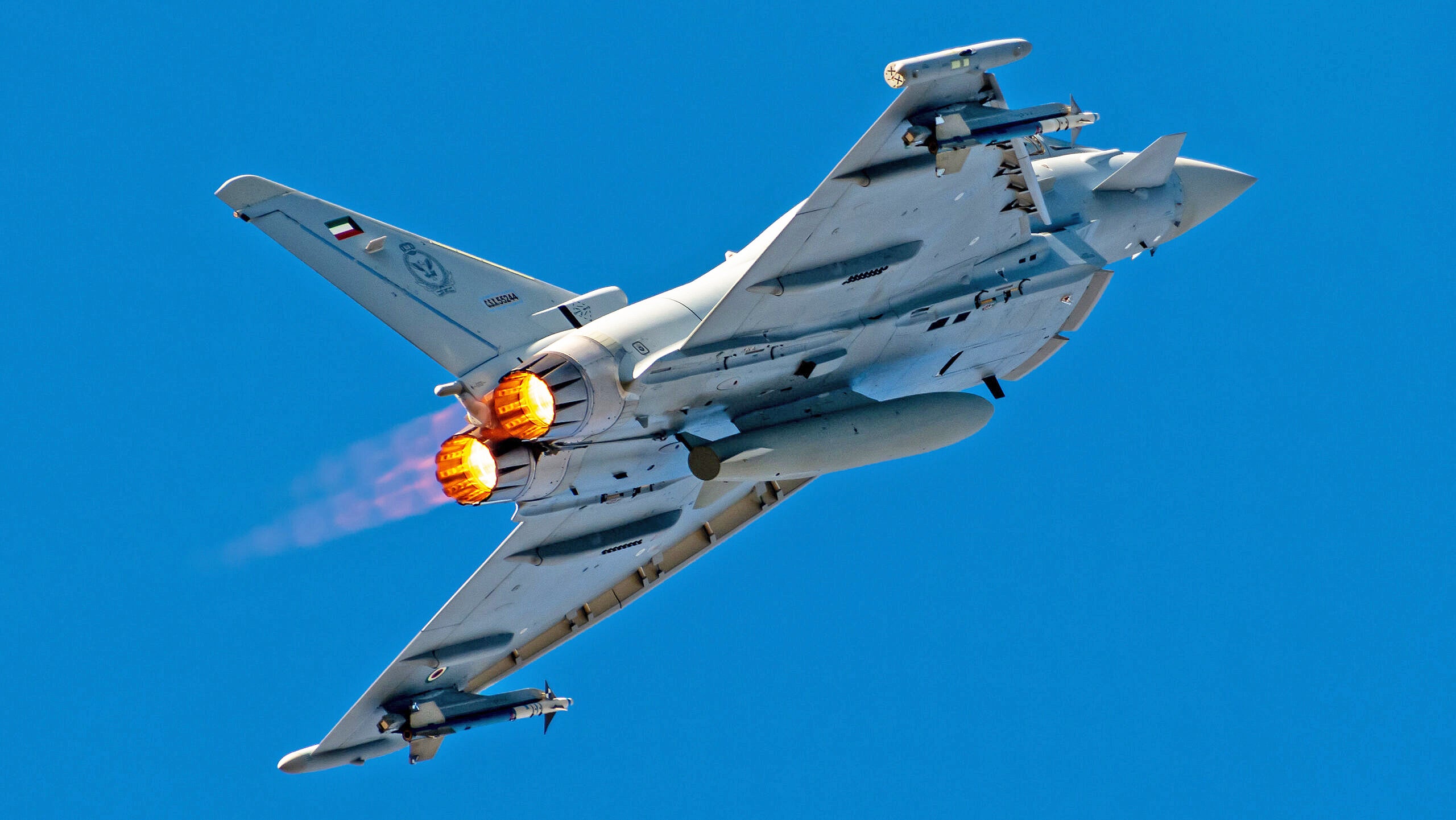The modernization of Kuwait’s fighter fleet took its next step forward with the official handover of the first two Eurofighter Typhoon jets to the emirate at the manufacturing facility in Italy. The Kuwait Air Force, or KAF, is the initial customer for the latest multirole Tranche 3 (P3Eb) standard of the Typhoon, equipped with the new Captor-E active electronically scanned array (AESA) radar and other upgrades, features that other customers also plan to adopt in the future.
The handover took place yesterday at the Leonardo Group’s Caselle facility near Turin. The ceremony was attended by officials that included the KAF’s deputy commander Air Vice-Marshal Bandar Al-Mezyen, and Kuwait’s ambassador to Italy, Sheikh Azzam Mubarak Sabah Al-Sabah. The KAF’s second-in-command told the Kuwait News Agency the two jets will be delivered to Kuwait next week.
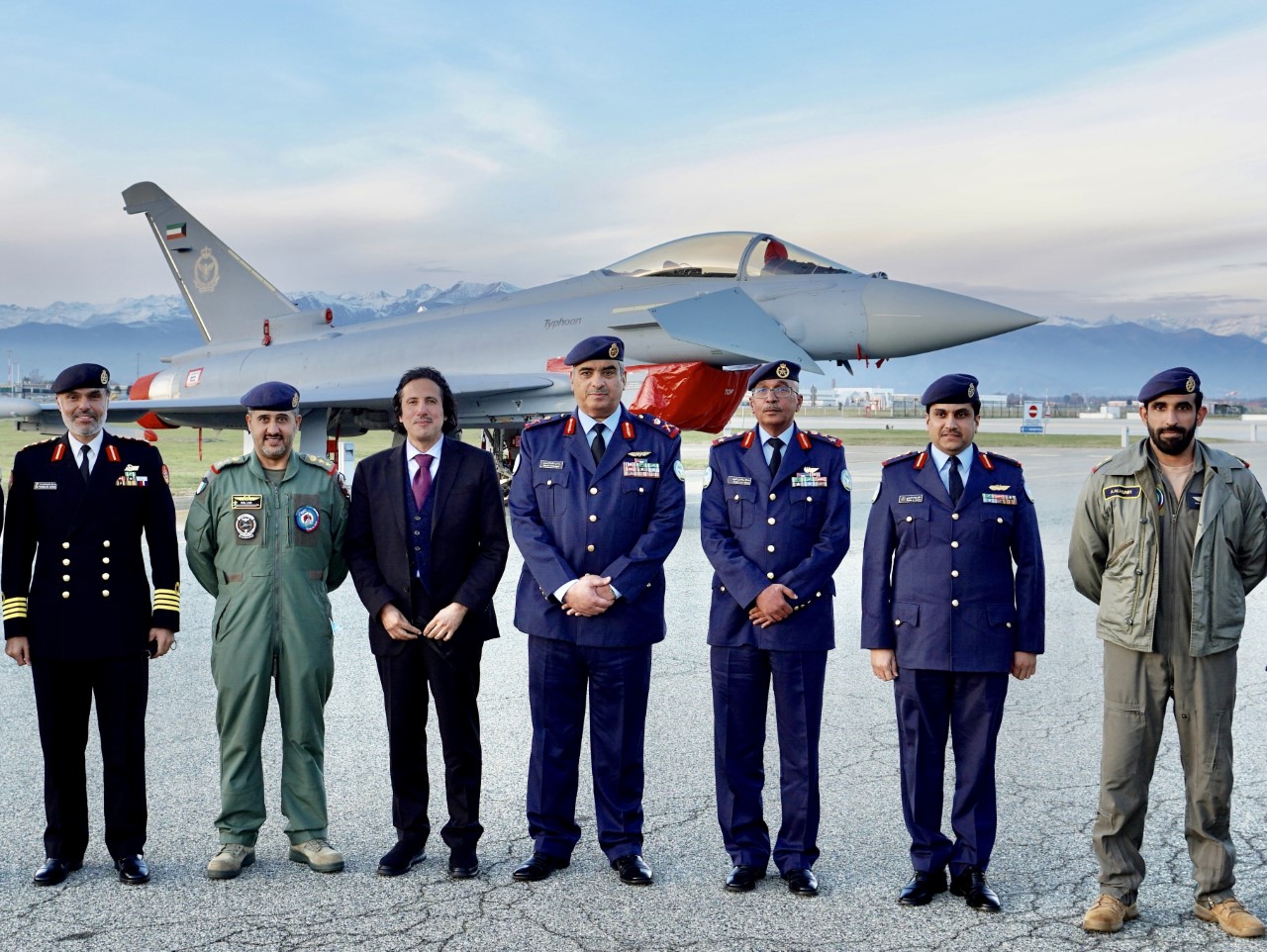
“This is a milestone in our comprehensive strategy to bring about a quantum leap in the preparedness of the Kuwait Air Force and the fruit of a long history of the defense cooperation with Italy,” Al-Mezyen said.

The first two Typhoons for the KAF were both twin-seat aircraft, which completed their maiden flights from Caselle on October 15. Based on a photo of the handover ceremony, they have since been joined by a single-seater, although it’s not clear if this jet has yet flown.
The accompanying photos were captured by Alessandro Maggia, whose Instagram page is well worth a look. He shot the first two KAF Typhoons during their flight-test program at Caselle.
The Kuwaiti government signed an acquisition valued at around $8.7 billion with Finmeccanica, now called Leonardo, in April 2016. This covered 28 Typhoons, comprising 22 single-seaters and six two-seaters. Also included were operational training, three years of operational support and logistics packages, plus dedicated infrastructure at Ali Al Salem Air Base, where the KAF Typhoons will be based.
Since then, however, the program has been subject to serious delays. The first aircraft entered the final assembly phase in October 2018, and it had been planned to deliver an initial jet to the KAF in 2019.
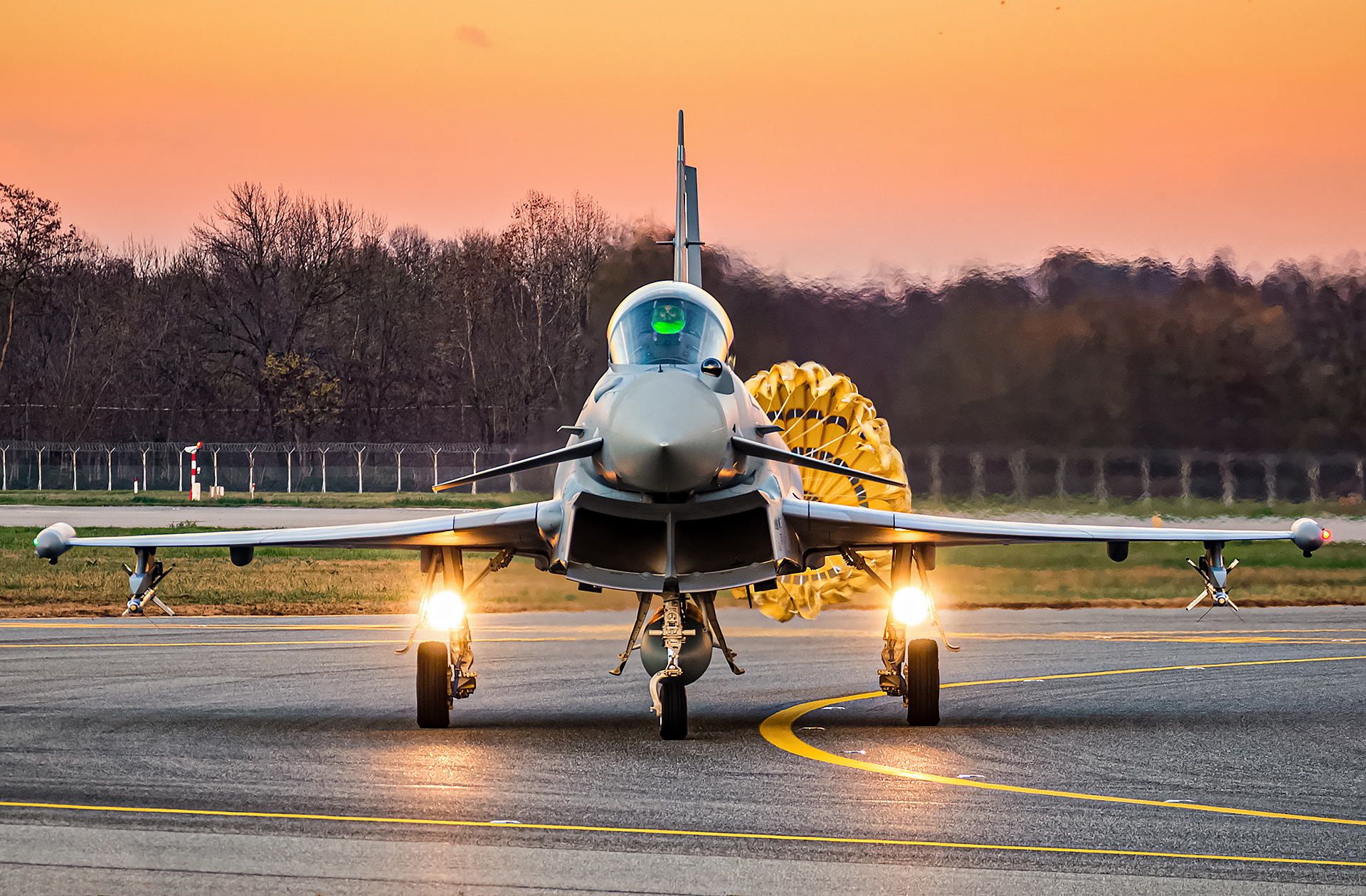
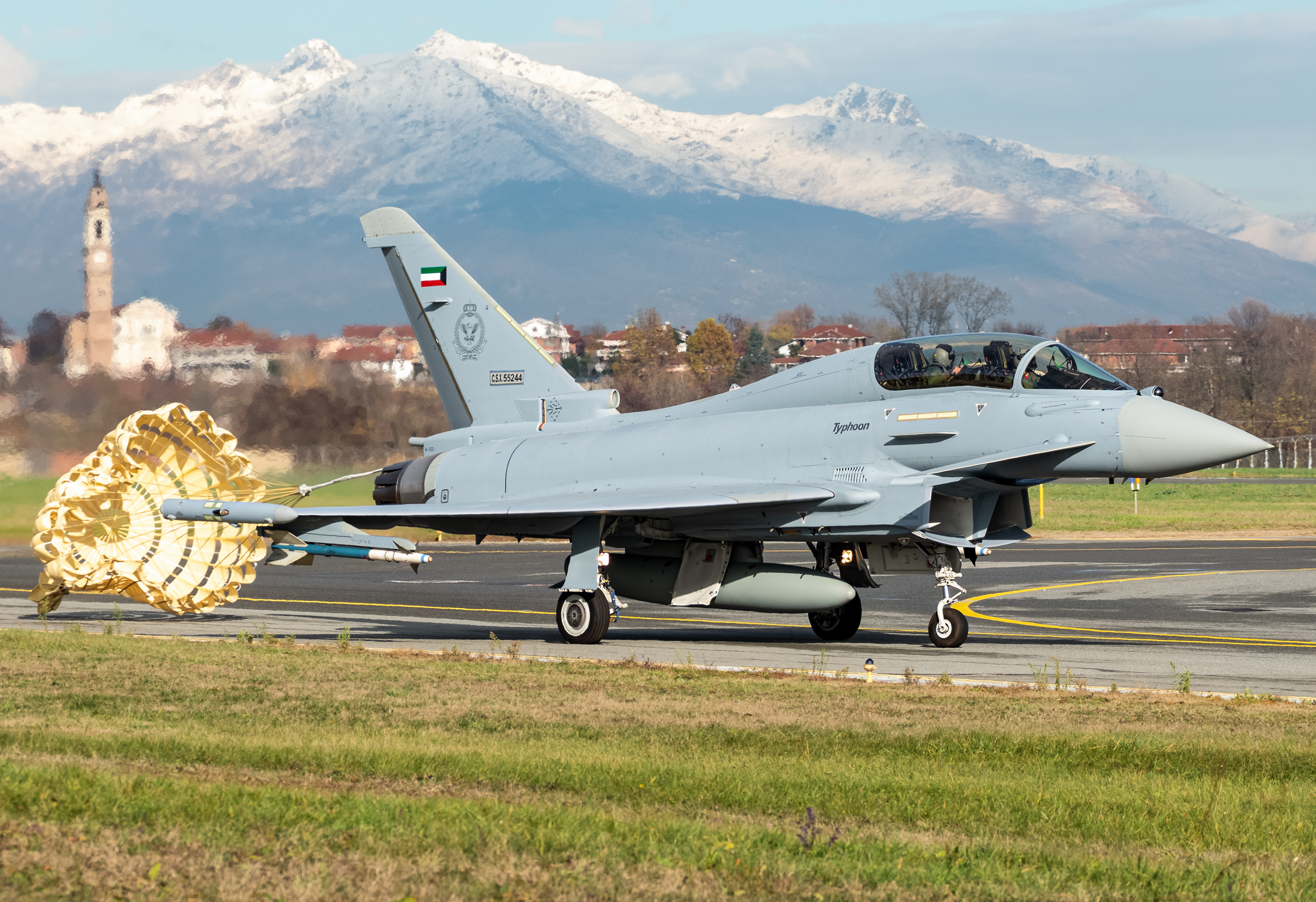
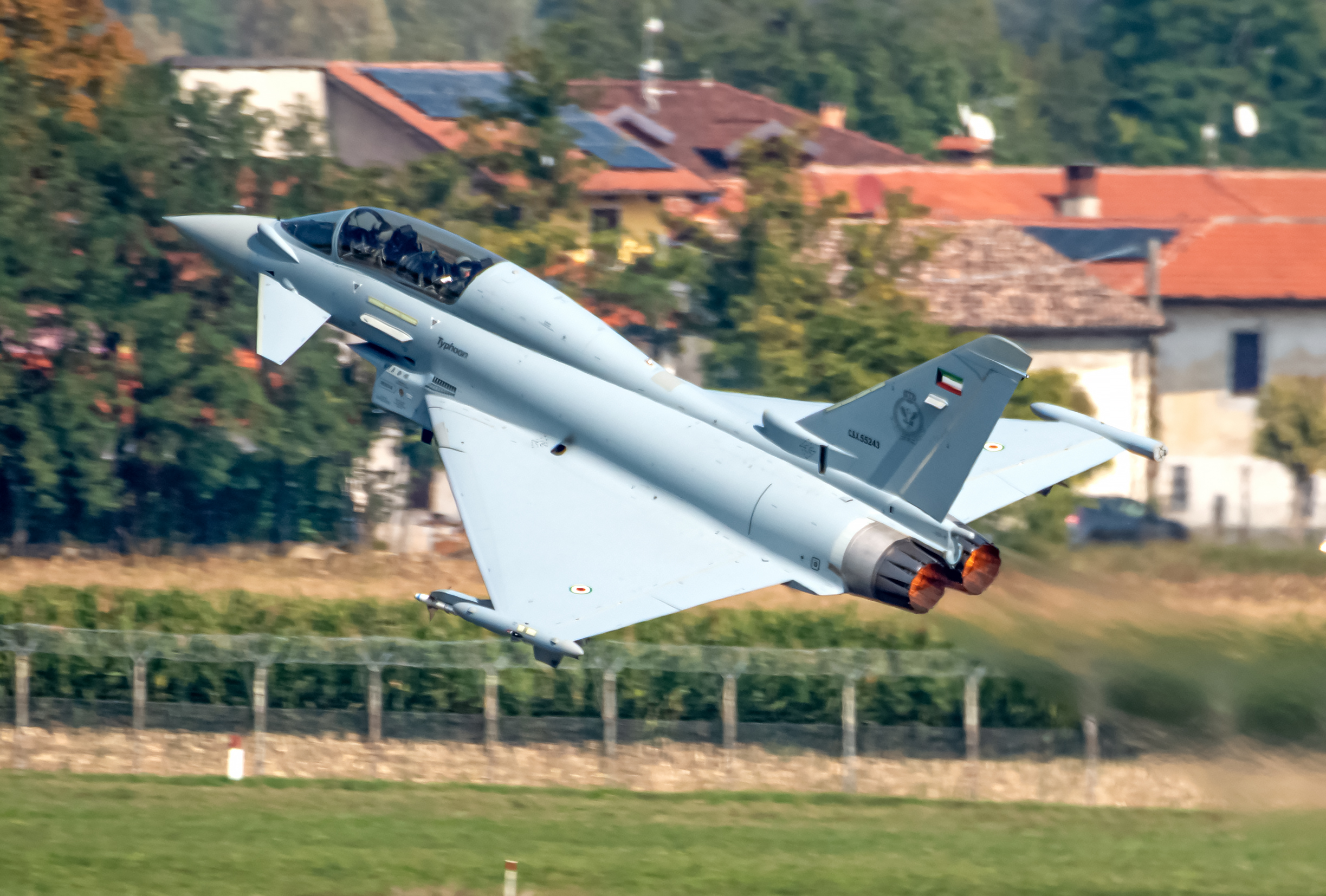
Now, however, the KAF is poised to receive the most advanced Typhoons in service anywhere to date. As well as the Captor-E AESA radar, also known as the ECRS Mk 0, which you can read about in-depth here, the P3Eb package includes other advanced features.
Kuwait’s Typhoons will also be the first to be fitted with the Lockheed Martin AN/AAQ-33 Sniper advanced targeting pod (ATP).
In terms of weapons, the jets will be supplied with the MBDA Brimstone air-to-ground missile and Storm Shadow standoff cruise missile. They will have provision for the Meteor long-range air-to-air missile but will initially be provided with the AIM-120C-7 Advanced Medium-Range Air-to-Air Missile (AMRAAM).
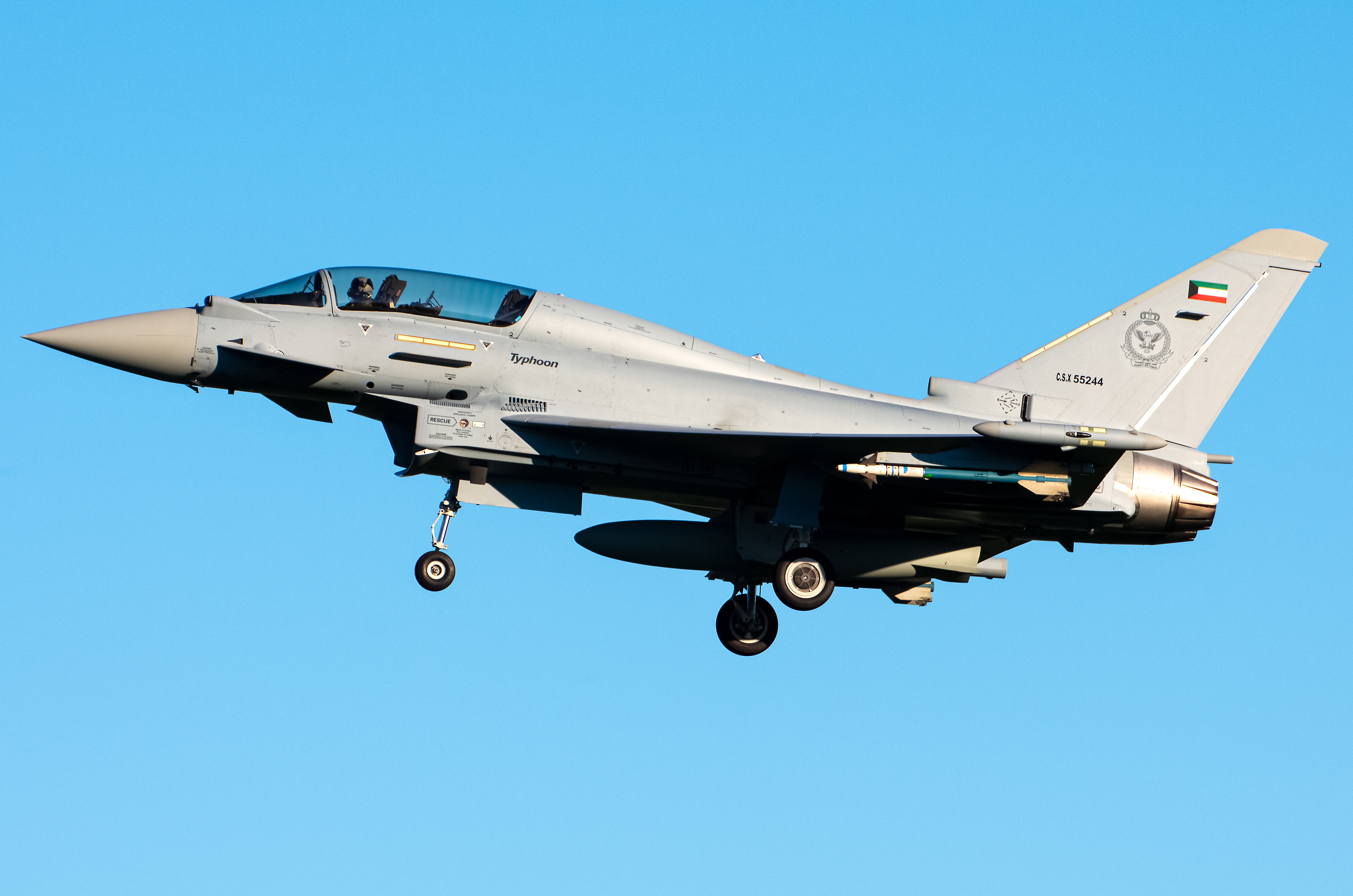
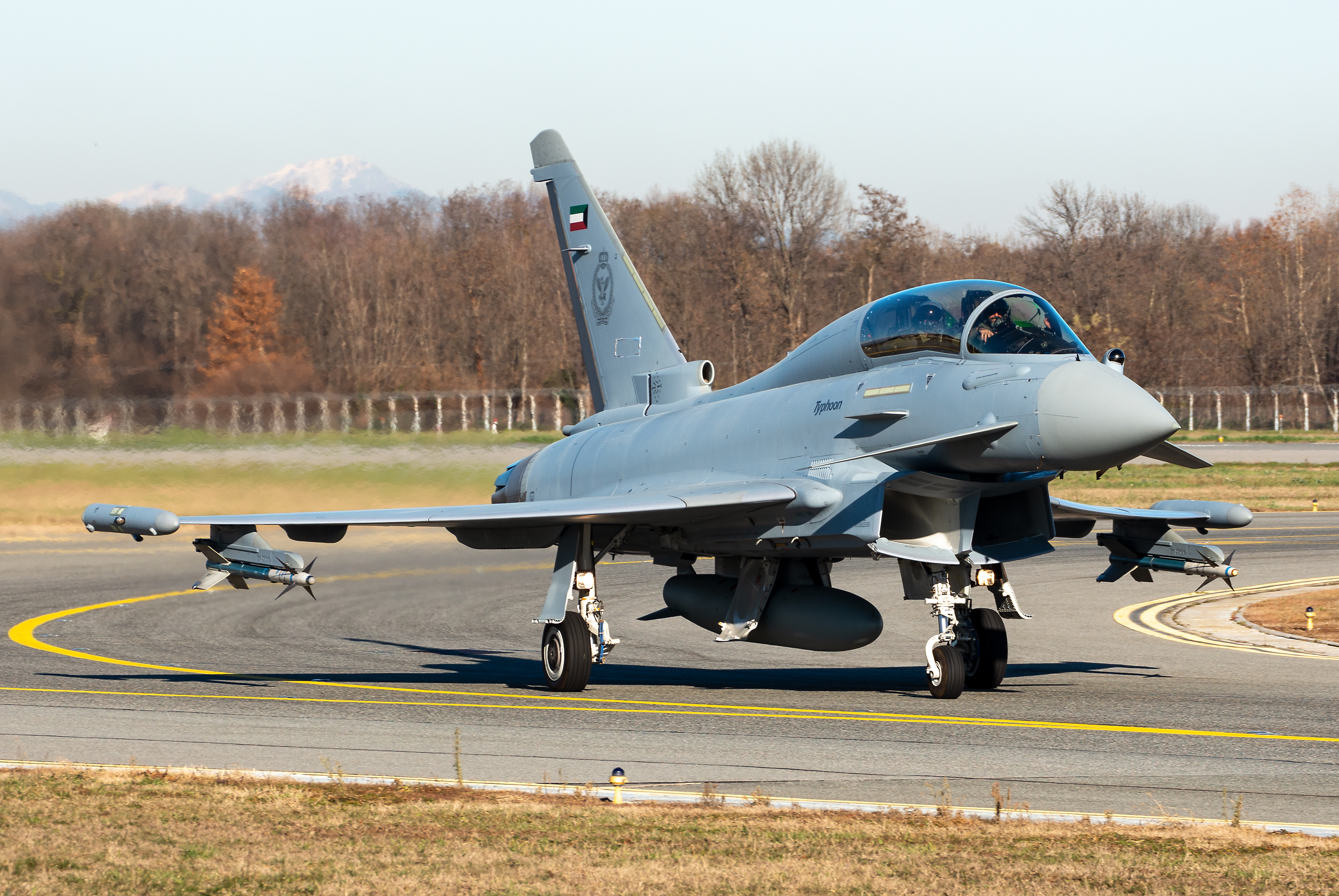
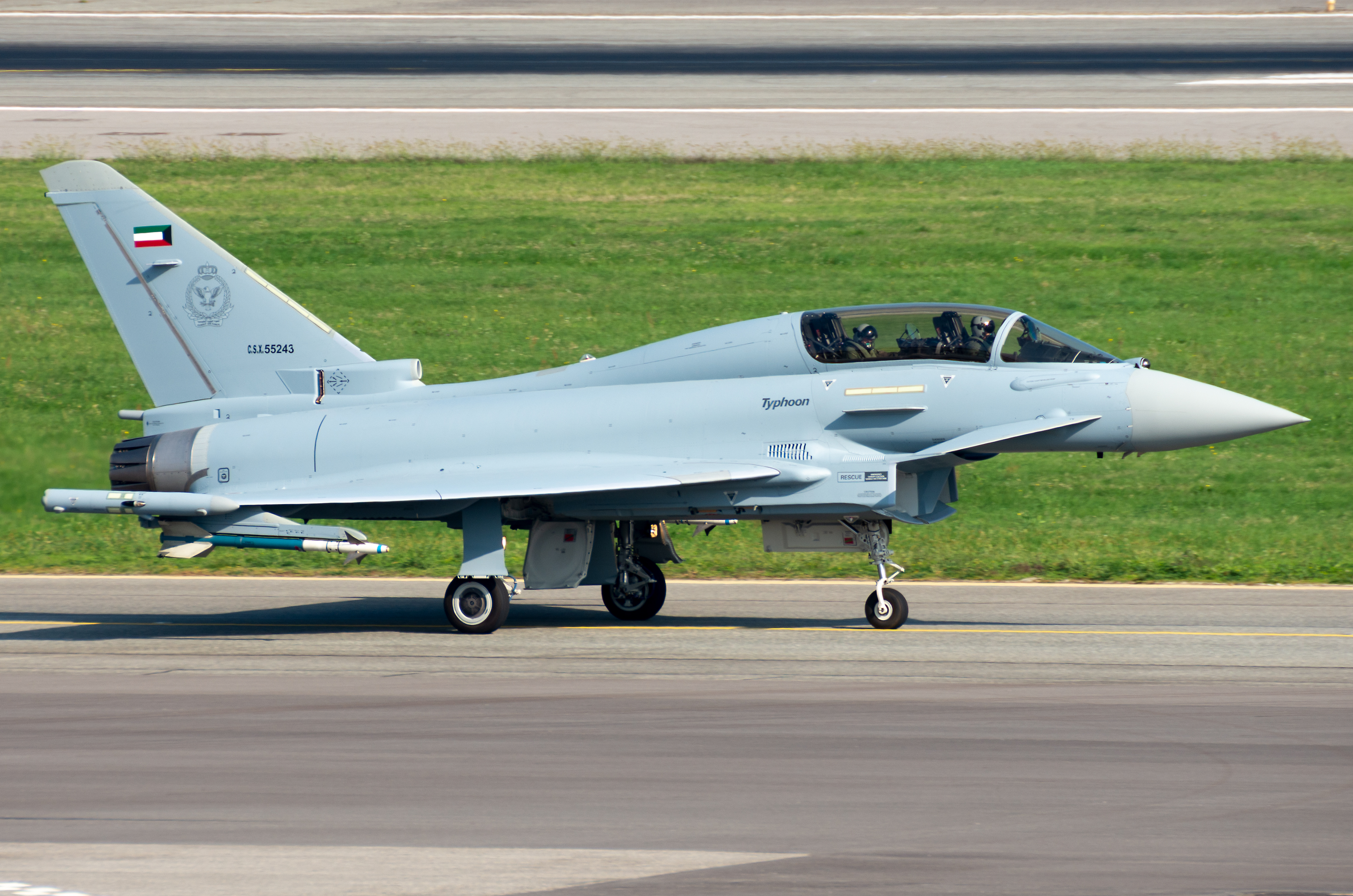
As part of the deal, pilots for the KAF Typhoons are undergoing operational training with the Italian Air Force, at Grosseto Air Base, home of the Italian operational conversion unit (OCU).
The overseas training effort is of vital importance for the KAF. The service doesn’t operate its own training fleet, with both its Short Tucano turboprop trainers and Hawk Mk 64 jet trainers currently being grounded. While there have been abortive plans in the past to return at least the Hawks to airworthiness, both Tucanos and Hawks are previous-generation types that lack the advanced cockpits required to prepare pilots for the Typhoon or Super Hornet.
Instead, KAF pilots complete basic and advanced training phases with the Italian Air Force at Lecce-Galatina Air Base, flying the Aermacchi MB-339, before undergoing lead-in fighter training (LIFT) on the same service’s Leonardo M-346 at the same base.
Overall, the Kuwaiti Typhoon order cements the jet’s reputation in the region, with four Middle Eastern nations having bought it; Oman, Qatar, and Saudi Arabia are the others.
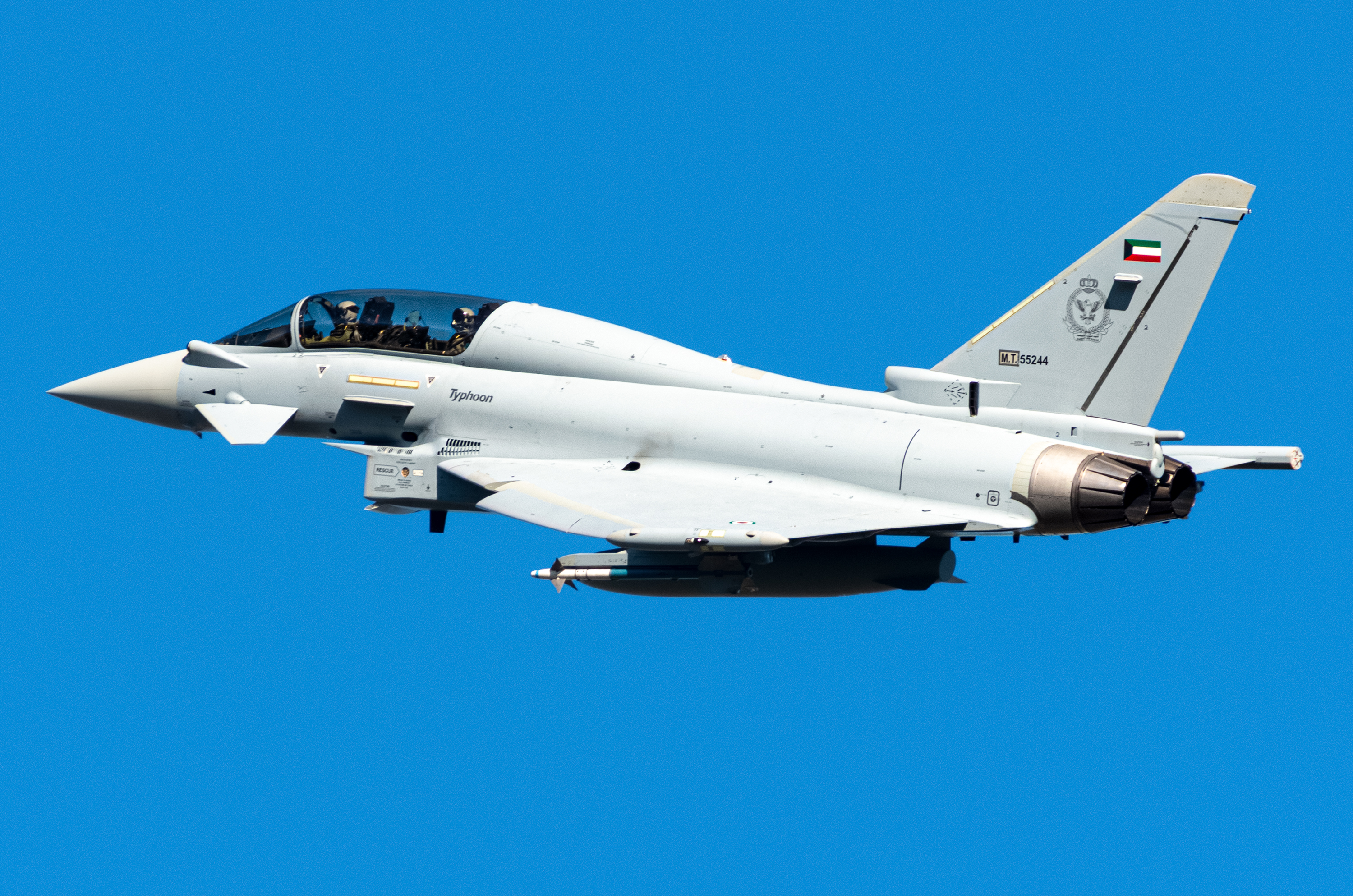
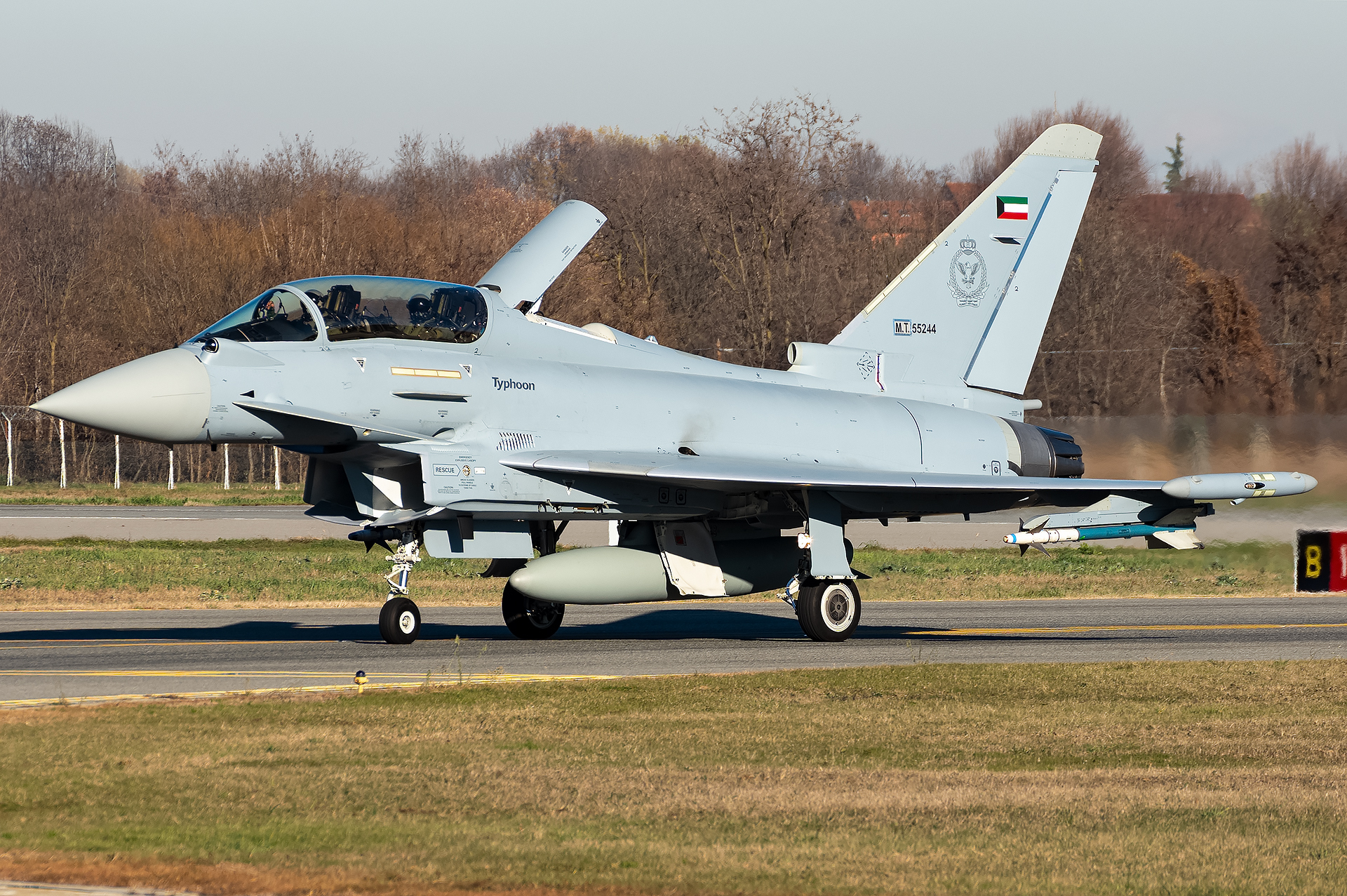
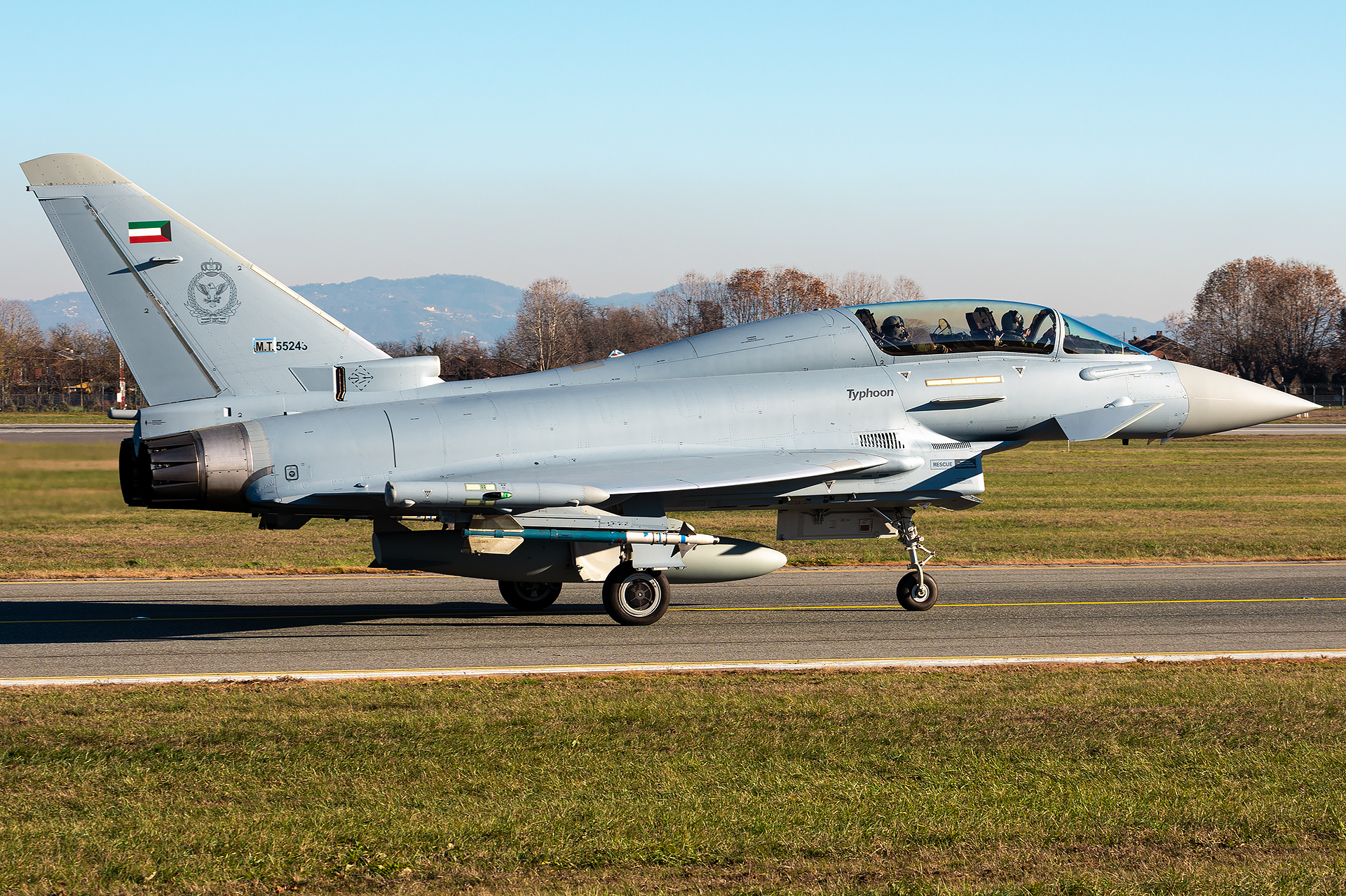
While the Typhoon will be a significant advance over the 30-year-old F/A-18C/Ds now in service, it’s just one part of a two-phase fighter revamp, for an eventual total of 56 new aircraft that will replace the 29 surviving ‘legacy’ Hornets.
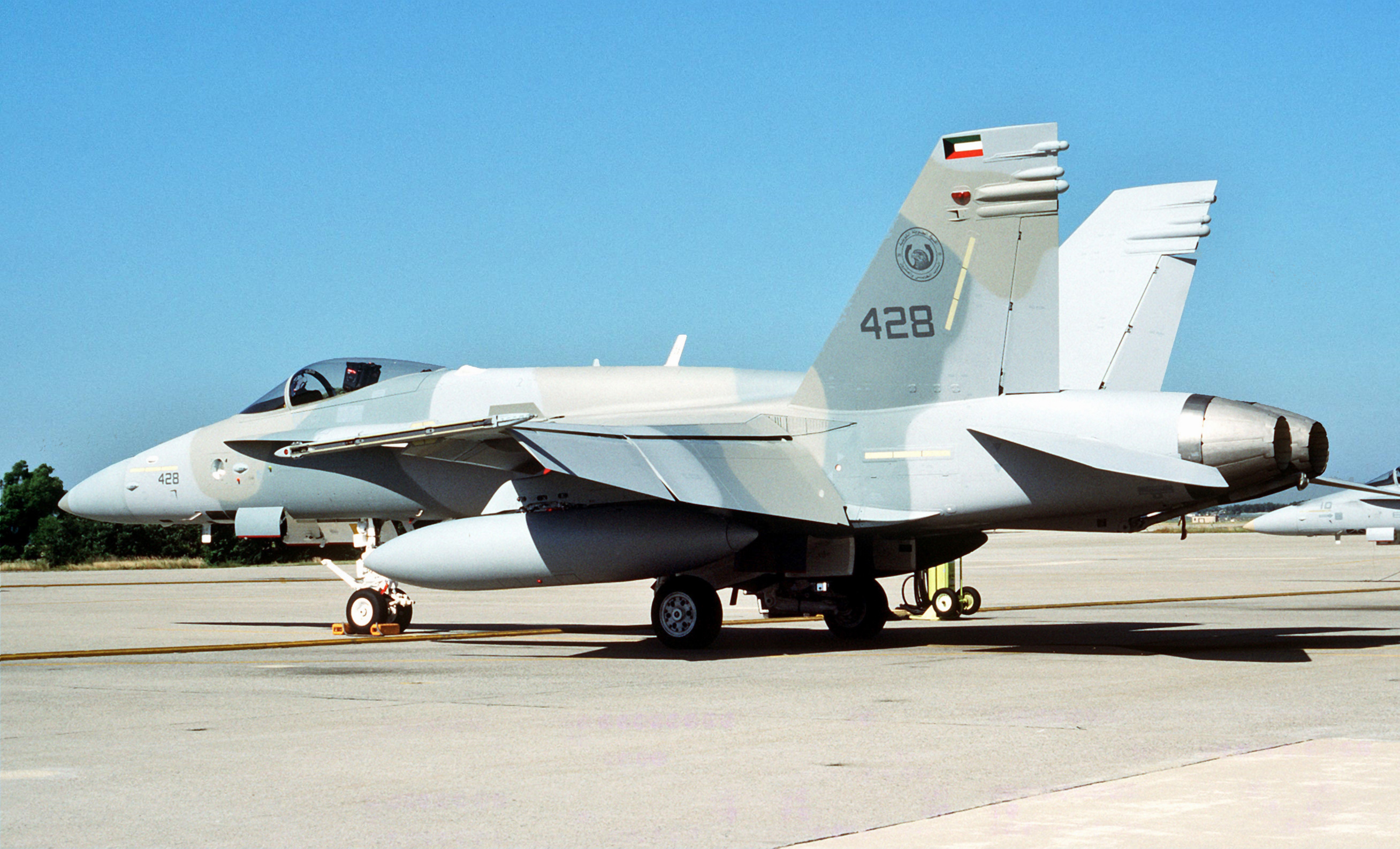
Under a government-to-government Foreign Military Sales (FMS) deal worth around $10 billion and agreed to in June 2018, Kuwait is also receiving 28 Boeing F/A-18E/F Super Hornets.
These jets, the first of which broke cover in its service colors in September last year, are completed to a hybrid Block II/Block III standard. They include advanced features such as an upgraded AN/APG-79 AESA radar, Integrated Defensive Electronic Countermeasures, and an advanced targeting pod. The cockpit is equipped with Elbit Systems wide-area cockpit displays, while the airframe life is extended from 6,000 to 9,000 hours, among other improvements.
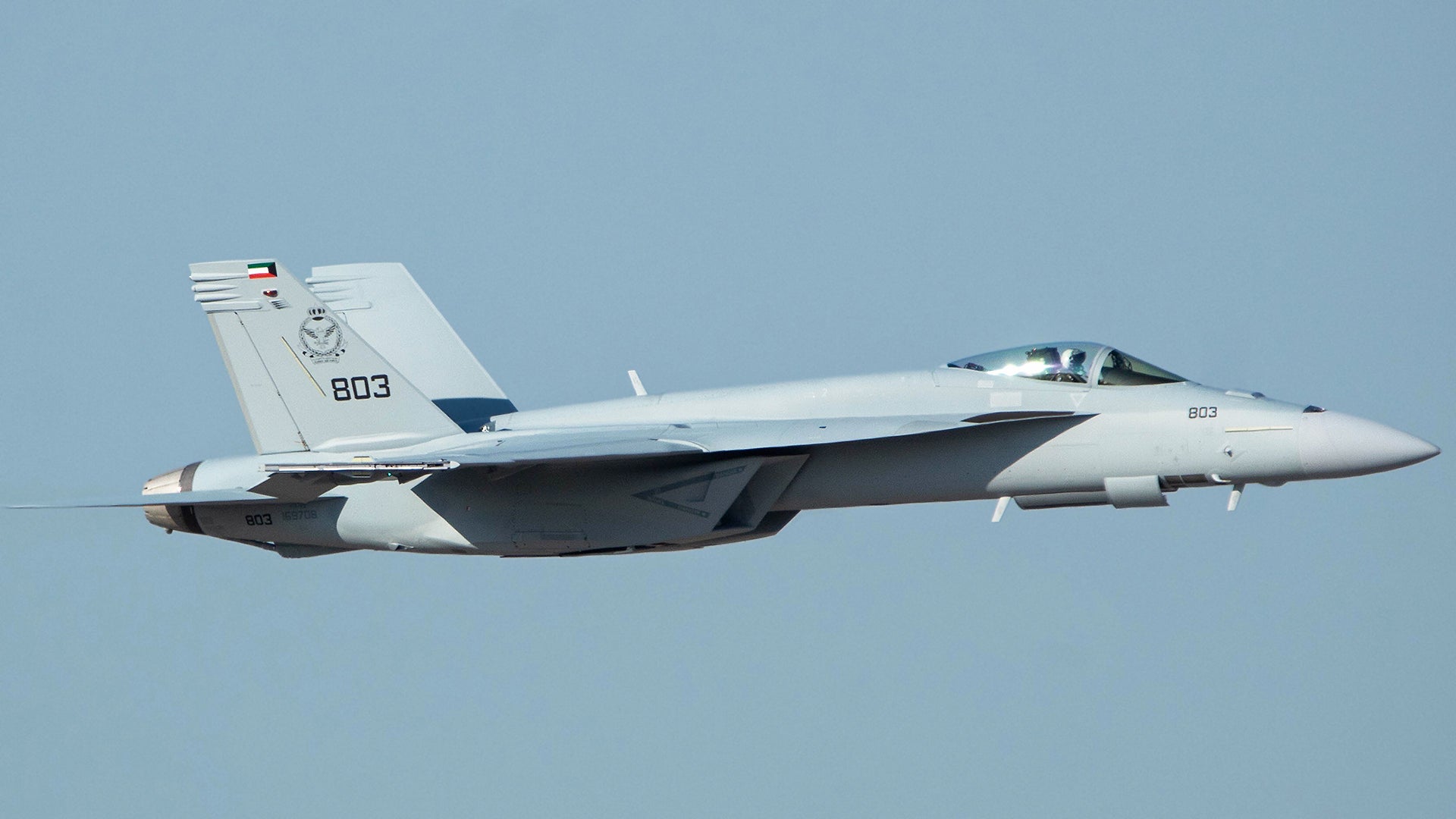
The Super Hornets have all now been delivered to the U.S. Navy, pending handover to the KAF in the coming months, with the delivery schedule having been interrupted by the effects of the COVID pandemic.
Fielding two separate fighter fleets, from different sources, is a new prospect for Kuwait, but it follows what’s becoming common practice among the Gulf states. As well as Saudi Arabia, with its long history of procuring American and British fighters, Qatar is now buying fighters from three different sources, while the United Arab Emirates may well add F-35 stealth jets to its recent Dassault Rafale order. This policy not only ensures political and military ties with the supplier nations but should help ensure long-term fighter availability if one source is cut off.
While the KAF is fairly small, it has traditionally maintained high levels of capability and invested in good training. In addition, the KAF has gathered recent combat experience in support of the Saudi-led coalition’s military intervention in Yemen, conducting airstrikes against Houthi rebels.
With both the Typhoon and Super Hornet close to delivery, the KAF will have one of the most modern and capable fighter fleets in the Middle East.
Contact the author: thomas@thedrive.com
